|
Souterrains du monde is published today by Actes Sud
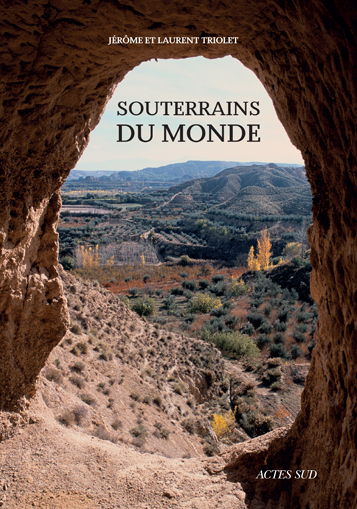
It's the culmination of 40 years of research, although we intend to continue exploring and studying underground passages in France and elsewhere for a long time.
It's the culmination of a process that began 40 years ago, starting with our first underground refuges visits. We were already convinced that only large-scale comparisons would give us a better understanding of the phenomenon, its motivations, its regional variations, and enable us to go further by identifying common points and recurrences... From Austria we learned that some underground refuges may have been dug to shelter women and children, it was Benin and Ireland that gave us the idea that slaves might have been sheltered there... however we had from a long time in Touraine a brief text from 1074 listing only women and children from servile families among the victims suffocated with smoke in the Grizay underground refuge...
It is also the result of a method based on topographical and photographic surveys of these rock-cut monuments, their architectural analysis and the mapping of their distribution. The plans permit understanding of both digging and organisation, and maps provide us with information about the geological and geographical context. Photographs allow us to record the architecture and sometimes reveal certain details that we hadn't noticed when exploring by torchlight alone, often in difficult conditions.
It's also a pleasure to share almost everything we know today about these unique monuments, and to highlight these exceptional and difficult-to-access places with our finest photographs. Laurent sometimes says that, after the publication of this book, we have run out of good unpublished images....
Fortunately, this is not entirely true, and the scale of the phenomenon and its geographical distribution is such that the field of possibilities remains, on our scale, dizzying.
Thanks a lot to Aude Gros de Beler and Actes Sud, who have given us this wonderful opportunity and enabled us to go much further than we imagined when this project was born, in 2019, in an office of the Méjan in Arles.
Jérôme and Laurent Triolet, Wednesday 5 March 2025
Souterrains du monde, Jérôme and Laurent Triolet, Actes Sud publishing house, Arles, 2025, 17 x 24 cm, full color book, 160 pages, 130 illustrations (photos and figures), written in French, 29 €. |
|
GÖREME AND SAHINEFENDI, edited by Andrea Bixio, Roberto Bixio, Andrea De Pascale
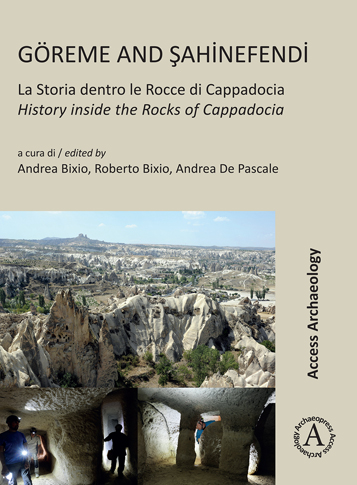
GÖREME AND SAHINEFENDI. La Storia dentro le Rocce di Cappadocia / History inside the Rocks of Cappadocia
Edited by Andrea Bixio, Roberto Bixio, Andrea De Pascale, Acces Archaeology, Archeopress, Oxford, 2023, 862 p.
Book fully bilingual Italian / English. Available on www.archaeopress.com - Free PDF book for personal use.
An impressive amount of work, remarkable for its richness and quality…That is what best describes the new book edited by our friend Roberto Bixio with Andrea Bixio and Andrea De Pascale, who have been working on rock-cut heritage of Cappadocia for more than thirty years. This book of just over 850 pages, richly illustrated with beautiful photographs, many maps and multiple architectural plans and drawings, brings together all the knowledge they have acquired about rock-cut heritage in the regions of Göreme and Sahinefendi, that are already world famous for their troglodyte churches, some of which are listed as World Heritage Sites.
After an introduction putting in perspective all the research conducted in Cappadocia since Guillaume de Jerphanion, our Italians colleagues describe all the rock-cut structures, among which the famous underground cities and their defensive organization. Then, they devote the last chapter of this general presentation to the few written sources that have come to us and that could bring an historical perspective. In some 122 pages, they offer the reader most of the knowledge available today about Cappadocian rock cut heritage.
Afterwards, in the first part of the book, the authors focus on the region of Göreme, on its water systems, on its rock-cut dovecotes and apiaries, on some little-known churches and on numerous hitherto unexplored underground shelters. The structure studied are described with a lot of details and illustrations, like the underground refuges defended by stone doors discovered in the vicinity of Saint Eustachius Church or that of Kiliçlar Kilisesi. This provides the opportunity to appreciate the defensive skill and ingenuity deployed by those who have been dug these proximity fortresses in the soft but resistant tuff of the region.
Finally, they devote the second part of the book to the rock-cut structures they have studied in an area of Cappadocia further south and much less known: the Sahinefendi basin. Among the churches, the monasteries, the dovecotes and the shelters dug into the tuff, one will notice the detailed presentation, with photographs and plans, of the large underground shelter opening through windows pierced in the cliff wall and extending below the tabular mound of Orta Tepe, this community cliff refuge is reminiscent the Spanish cuevas or the French cluseaux.
Clearly, this book, made with the help of Ukrainian, French and Turkish researchers, will figure prominently in the library of those who are interested in souterrains and rock-cut Cappadocia, alongside of the precedent books of our Italian colleagues: Le Città sotterranee della Cappadocia (Erga, 1995), Cappadocia. Le città sotterranee (Libreria dello Stato, 2002) et Cappadocia, Schede dei siti sotterranei / Records of the underground sites (BAR International Series 2413, 2012).
Jérôme and Laurent Triolet, Monday 4 December 2023 |
|
30 Years of Explorations and Studies
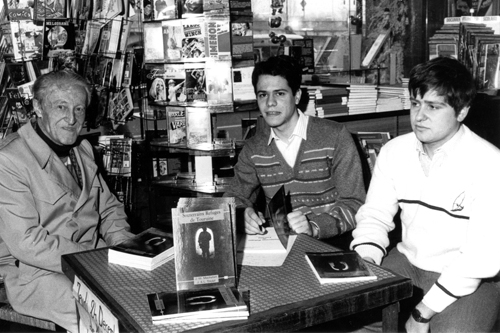
On this picture, Jean-Michel Machefert and Laurent are with Professor Raymond Mauny during a book signing session of Souterrains Refuges de Touraine, in Chinon (France). Raymond Mauny, a recognized specialist of West Africa archaeology and history, worked as a researcher at the French Institute of Black Africa (IFAN). During these African years, he worked with Théodore Monod, the IFAN Director, and also Amadou Hampâté Bâ. Raymond Mauny was also one of the first souterrains specialists in France. He is among the founders of the French Society for Souterrains Studies and published in 1967, with Gérard Cordier, Souterrains-refuges, caves fortes et hypogées de Touraine (in Bulletin des Amis du Vieux Chinon).
Thirty years ago, in 1987, we published Souterrains Refuges de Touraine. The source of this first book was a passion for artificial cavities, shared with our friend and co-author Jean-Michel Machefert, when we were teenagers. This publication project was really a big challenge for us and we were motivated by a desire to share our knowledge and our understanding of the wide medieval phenomenon we were discovering. This challenge has led us to a continued quest for cavities in France but also in other European countries, in Turkey, in West Africa, in Iran or in Vietnam. Year after year, progressively, we have become experts on the subject.
To mark the 30th anniversary of our first book publication, we have decided to present some of our souvenir pictures.
Visit the Photo Library
|
|
Underground Warfare in Algeria, 1954-1962
Sorry, there is no English version of this text.
|
|
A hundred years ago: 16 April 1917 Chemin des Dames (Aisne, France), the underground quarries swing the battle

On 16 April 1917, during the Nivelle Offensive, protected inside the underground quarries known locally as "creutes", German soldiers escape the French bombardment and use their grenades and machine guns to decimate French soldiers.
|
|
Sivasa: “Underground city” in Cappadocia
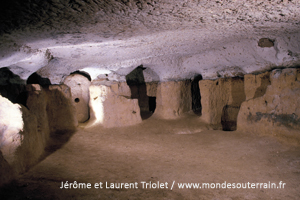
In 1988, we conducted an underground expedition in Cappadocia with Turkish research visas, a French ministry of sport grant and the support of industrial sponsors. We knew the existence of three “underground cities” open to the public and we believed that there was a lot of similarities between “underground cities” and underground refuges that we studied in Western France. The main goal of our expedition was to explore, to map and to conduct a detailed study of a new “underground city”.
Once in Cappadocia, our guide took us to the small village of Sivasa (Gökçetoprak). When we entered the hole drilled at the foot of the cliff surrounding the village, we discovered a corridor that leaded to a first room. Room after room, corridor after corridor, we understood that we were beginning an exceptional exploration. Split into two teams, our small group spent a week to map and photograph this big network of 25 rooms. At the end of this work, the villagers showed us new rooms and new corridors dug in other part of the cliff. We were amazed to see that, even after our work on the first network, it was possible to make additional discoveries in Sivasa.
Nearly ten years later, as we began a collaborative work with the team of Roberto Bixio, we learned that, behind the village of Sivasa, our Italian colleagues discovered seven other networks! In Sivasa, there are eight networks dug into the cliff surrounding the village, making a total of a hundred rooms distributed over an area of several hectares!
We were the first to study an untouched “underground city”, and the exploration of Sivasa will remain one of our best underground memories. In 1993, we published Les villes souterraines de Cappadoce; it was thefirst synthetic work about this topic, and we devoted an entire chapter to Sivasa. This book is today out of print and, nearly 30 years after our exploration, we thought it might be useful to offer in open access the text about Sivasa, together with the photographs taken during our study and the restored version of our map. This text gives a detailed description and a modelling of the defence organization of this exceptional underground refuge. For those who would like to know more about Cappadocian “underground cities”, we recommend the new synthetic study that we published in our book La guerre souterraine released in 2011.
Jérôme and Laurent Triolet, Thursday 9 February 2017
|
|
New tunnel warfare in Gaza
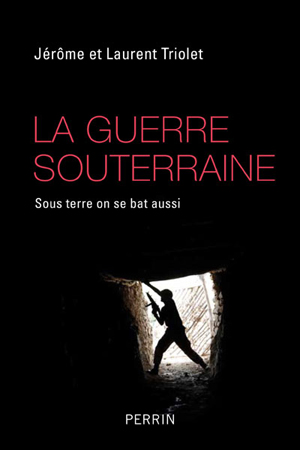
Today the Israeli Army enters the Gaza Strip to destroy the tunnels; we have dealt with this subject in our book La guerre souterraine, published in 2011.
Jérôme and Laurent Triolet, Friday 18 July 2014 |
|
Commentary of the Chinese film Tunnel Warfare (1965)
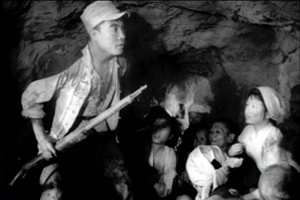
Sorry, there is no English version of this text. |
|
Tunnel warfare in North Mali?
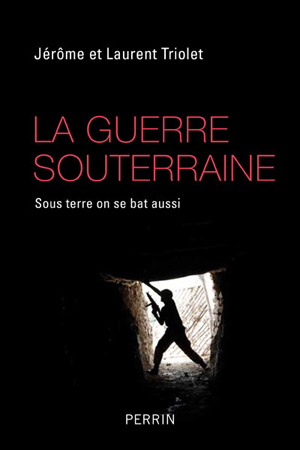
News and reports dealing with the discovery of numerous caves containing weapons and ammunitions in the Ametettaï valley, in the Adrar of Ifoghas seem to indicate that terrorist groups fighting against African and French armies are using tunnels and underground shelters. As a confirmation, a picture published in Le Monde and the corresponding video by France 24, show a half-buried room dug into a soft rock, maybe clay, with a narrow passage to force the invaders to crawl in order to progress inside the connected tunnel.
We have seen in our book, La Guerre souterraine, that Islamic fighters had already used caves and tunnels to fight successfully against Soviet and then Occidental forces in Afghanistan or the Algerian army in the 90’s. As a consequence, it’s not a surprise that fighters from previous Algerian GIA and GSPC, or trained in the Afghan mountains had been getting into a tunnel warfare.
Jérôme and Laurent Triolet, March 6, 2013 (updated April 2, 2013)
|
|